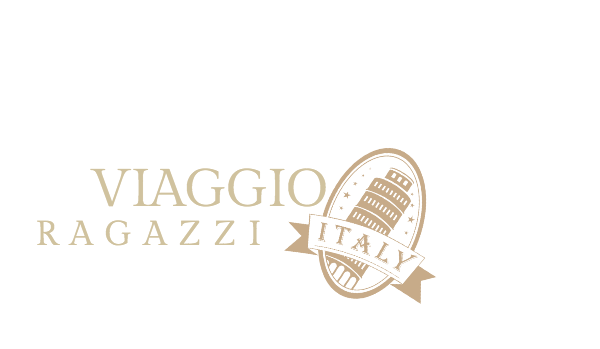Welcome to Verona, a city that effortlessly blends history, romance, and culture. If you’re planning a visit, you’re in for a treat. This guide will unveil the top 5 things you can do when visiting Verona, ensuring an unforgettable experience.
The top 5 things you can do when visiting Verona:


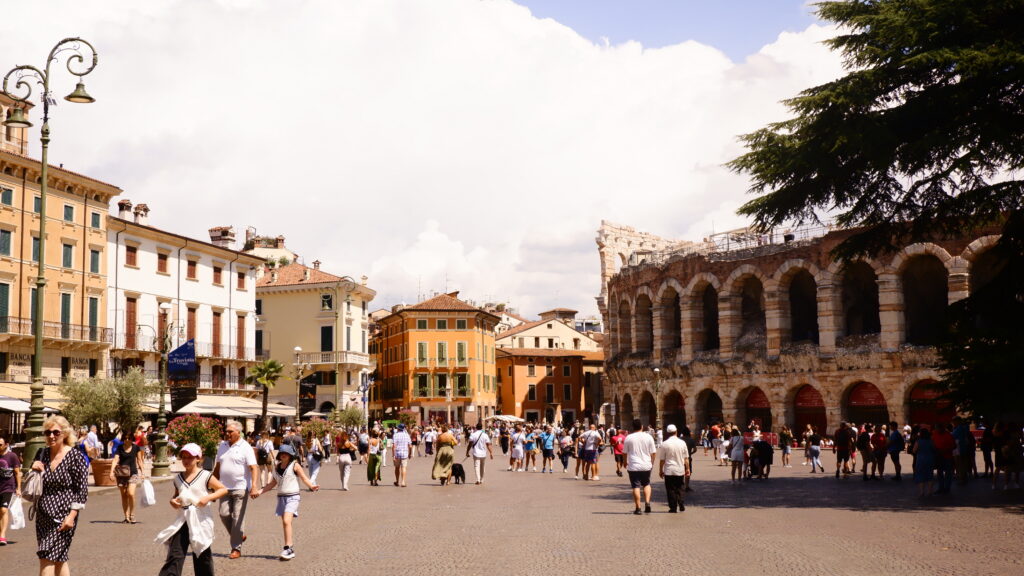
1. Juliet’s House: A Timeless Tale of Love and History
Nestled in the heart of Verona, Juliet’s House, also known as Casa di Giulietta, is a captivating destination that transports visitors to the romantic world of Shakespeare’s tragic love story. Steeped in history, this 13th-century building is believed to have belonged to the Capello family, inspiring the iconic balcony where Juliet declared her love to Romeo.
Exploring Juliet’s House:
As you step into the courtyard, you’ll be greeted by the bronze statue of Juliet. Tradition holds that touching her right breast brings luck in love, making it a popular spot for visitors seeking a touch of romance. The interiors of the house are adorned with period furniture, creating an immersive experience that allows you to imagine life in Verona during the Renaissance.

The Iconic Balcony:
The highlight of Juliet’s House is undoubtedly the balcony, where Romeo is said to have declared his love. Visitors from around the world gather beneath to catch a glimpse of the romantic setting. The atmosphere is particularly magical in the early morning or late afternoon when the sunlight bathes the balcony in a warm glow.
Love Letters and Traditions:
The walls of Juliet’s House are adorned with countless love letters, notes, and messages left by visitors. Couples often leave locks with their initials as a symbol of everlasting love. This tradition has turned the courtyard into a living testament to the enduring power of love, making it a must-visit for those seeking a touch of romantic serenity.
Best Time to Visit Juliet’s House:
While Juliet’s House welcomes visitors throughout the year, the best time to experience its charm is during the shoulder seasons of spring (April to June) and fall (September to October). During these months, the weather is mild, and the crowds are thinner, allowing for a more intimate exploration of this historic site.
Early morning or late afternoon visits offer a quieter atmosphere, providing a serene backdrop for capturing the beauty of Juliet’s balcony without the hustle and bustle of large crowds. Guided tours are also available to provide in-depth insights into the history and significance of this iconic landmark.
Historical Significance:
While Juliet and Romeo are fictional characters, the house itself has a rich history that dates back several centuries. The Capello family, who owned the house, were influential merchants in Verona. The connection between the Capello family and the story of Romeo and Juliet adds an intriguing layer to the house’s historical tapestry.
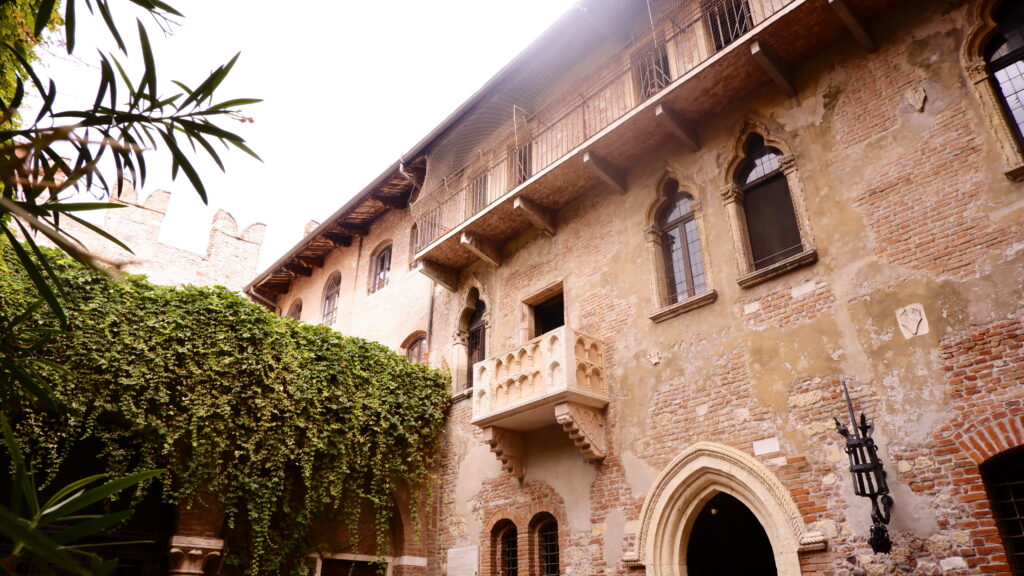
In the 20th century, Juliet’s House became a symbol of enduring love, attracting lovers and romantics from around the world. Today, it stands as a testament to the power of storytelling and the universal appeal of Shakespeare’s timeless masterpiece.
In conclusion, a visit to Juliet’s House is not just a journey into the world of fiction but a step back in time to explore the rich history and cultural significance of Verona. Whether you’re a literature enthusiast or a hopeless romantic, this iconic destination promises an experience that transcends the boundaries of time.
2. Piazza delle Erbe: Where History Meets Vibrancy
History and Origins:
Piazza delle Erbe, translated as the “Market Square,” is the beating heart of Verona’s historic center. With roots dating back to ancient Roman times, this square has witnessed centuries of transformation, making it a fascinating blend of history and modern vitality. Originally, it served as the Roman Forum, the city’s political and economic hub.
In the medieval period, Piazza delle Erbe evolved into a bustling market square, where merchants traded spices, fabrics, and exotic goods. The architectural marvels surrounding the square, including the Baroque-style Palazzo Maffei and the Lamberti Tower, showcase the influence of different eras on this iconic space.
Architectural Gems:
Surrounded by elegant buildings adorned with frescoes and intricate detailing, Piazza delle Erbe exudes a timeless charm. Palazzo Maffei, with its impressive clock tower, stands as a symbol of the city’s prosperity during the Renaissance. The vibrant colors and architectural styles of the buildings create a picturesque setting, drawing visitors into the lively atmosphere.

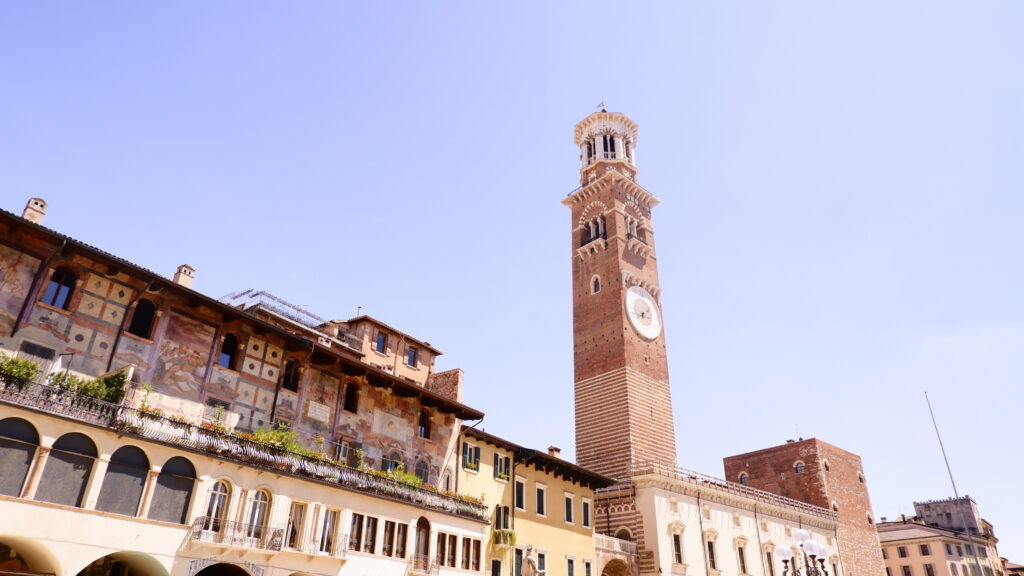

The Fountain of Madonna Verona:
At the center of Piazza delle Erbe stands the Fontana di Madonna Verona, a magnificent marble fountain featuring a statue of the Roman goddess of love, Venus. This fountain, crafted in the 14th century, adds a touch of classical elegance to the square. It serves as a gathering point for locals and tourists alike, providing a tranquil oasis amidst the vibrant energy of the market.
Market Delights:
Piazza delle Erbe continues its market tradition to this day. Stroll through the market stalls, where vendors offer a delightful array of fresh produce, artisanal crafts, and local specialties. The scent of herbs, flowers, and spices fills the air, creating a sensory experience that captures the essence of Veronese culture.
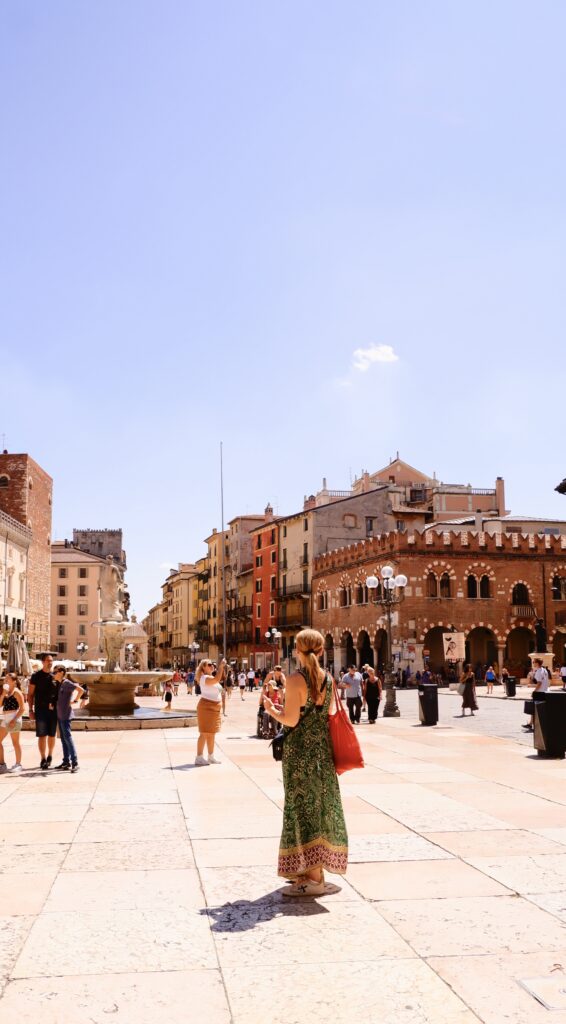
Events and Festivals:
Throughout the year, Piazza delle Erbe hosts various events and festivals, adding an extra layer of excitement. From cultural celebrations to music festivals, the square becomes a dynamic hub of activity, providing visitors with an immersive experience of Verona’s vibrant cultural scene.
In essence, Piazza delle Erbe is more than just a square; it’s a living testament to the city’s history, resilience, and cultural richness. Whether you’re exploring its market stalls, admiring the architectural wonders, or simply sipping a coffee at a charming cafe, Piazza delle Erbe invites you to become part of the lively rhythm of Veronese life.
Certainly! Let’s delve into the grandeur of the Verona Arena, exploring its history, the captivating world of opera, and practical details for visitors.
3. Verona Arena: A Majestic Time Capsule
Historical Marvel:
The Verona Arena, an ancient Roman amphitheater, stands as a testament to the architectural prowess of the Roman Empire. Built in the 1st century AD, this arena once hosted gladiator contests and other public spectacles, accommodating thousands of spectators in its grandiose structure. Despite the passage of centuries, the Verona Arena remains remarkably well-preserved, offering a glimpse into the ancient world.
Architectural Splendor:
Constructed with pink and white limestone, the Verona Arena boasts a facade adorned with arches, columns, and intricate details. The elliptical shape of the arena was ingeniously designed to ensure optimal visibility for all attendees. Today, the arena is a striking symbol of Verona’s rich history and a venue for cultural events that draw visitors from around the globe.

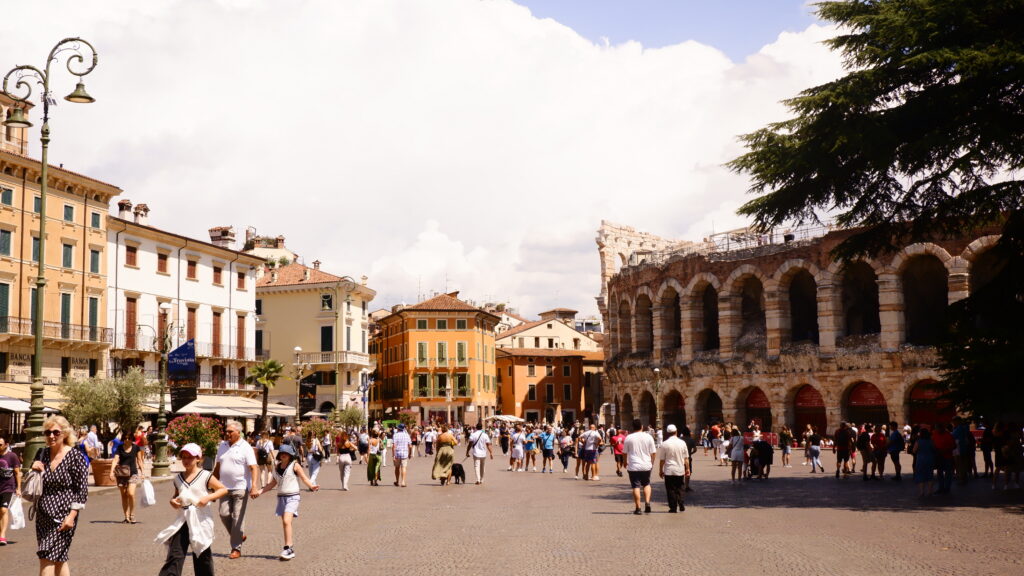
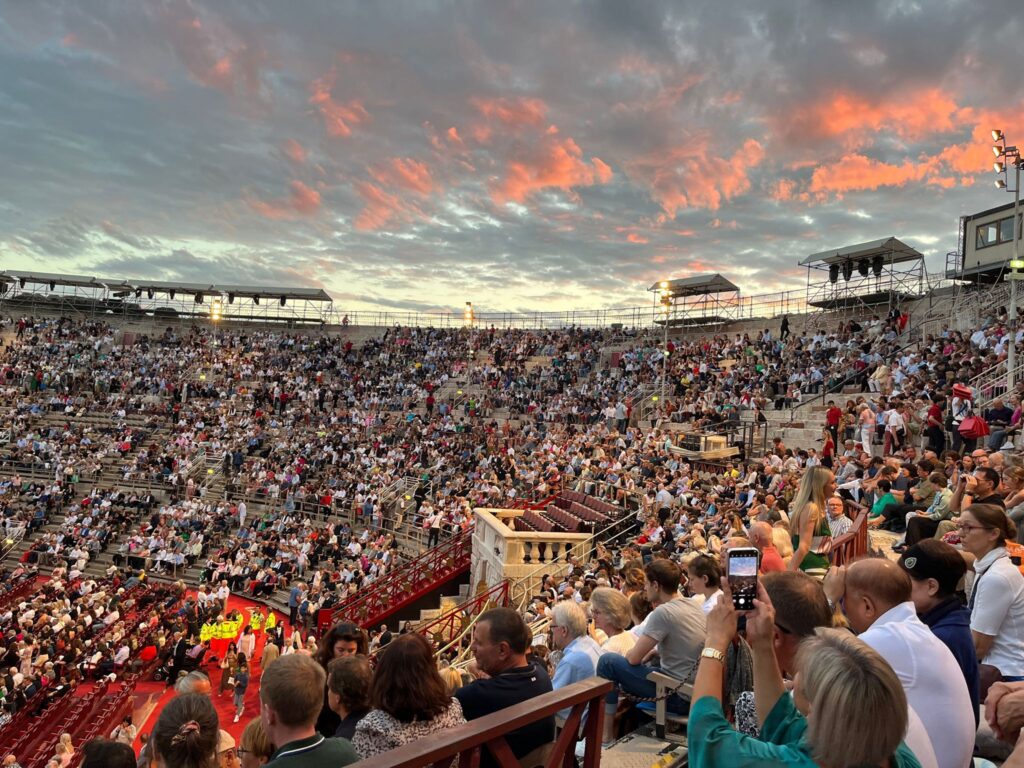
Opera in the Arena: A Surreal Experience
Summer Opera Festival:
One of the most enchanting aspects of the Verona Arena is its role as a world-renowned venue for opera performances. The Summer Opera Festival, held annually from June to September, transforms the arena into an open-air stage for some of the most celebrated operas. The combination of the ancient backdrop, the starlit sky, and the emotive strains of operatic masterpieces creates a truly magical experience.
Highlights of Opera Performances:
Attendees have the opportunity to witness iconic operas such as “Aida,” “La Traviata,” and “Carmen” performed by internationally acclaimed artists. The sheer scale of the arena amplifies the drama and emotion of these timeless works, transporting the audience to another realm.
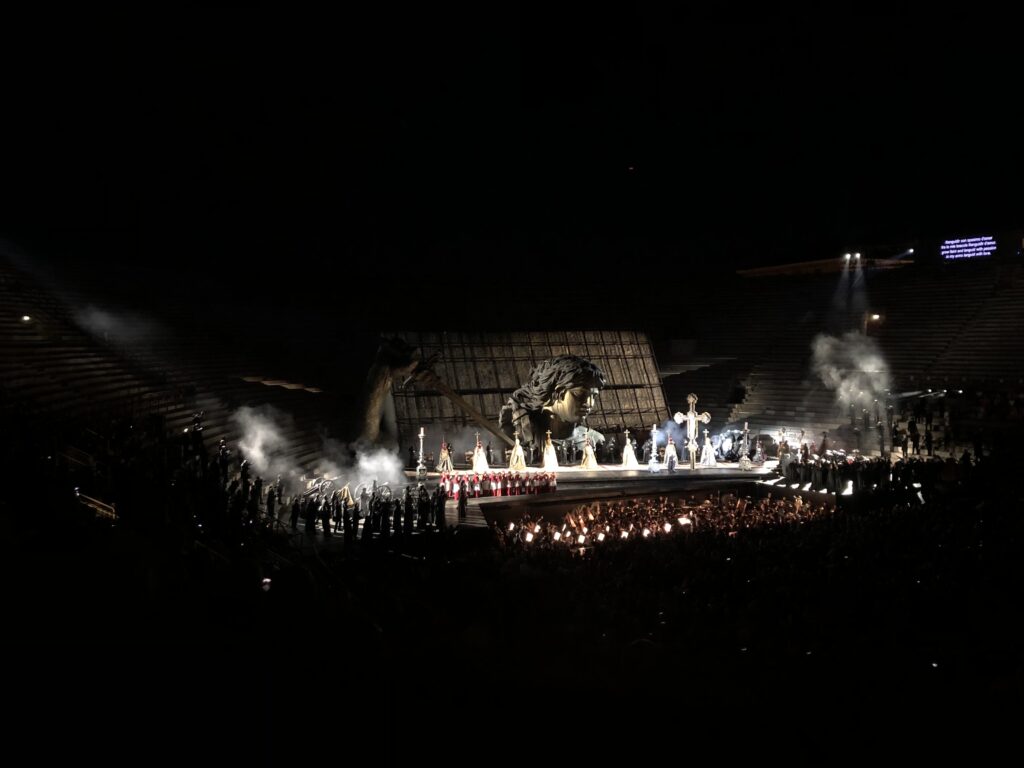
Visiting the Verona Arena: Practical Details
Ticket Prices:
The cost of visiting the Verona Arena varies depending on the type of event and seating. Ticket prices for opera performances during the Summer Opera Festival typically range from €30 to €250, with different pricing tiers based on the seating section.
Guided Tours:
For a more in-depth exploration of the Verona Arena’s history and architecture, guided tours are available. These tours provide insights into the arena’s Roman origins, its evolution over the centuries, and the behind-the-scenes aspects of organizing grand cultural events.
Tips for Visitors:
- Book Tickets in Advance: Given the popularity of opera performances, it’s advisable to book tickets well in advance, especially for sought-after shows.
- Comfortable Attire: As the arena is an open-air venue, consider bringing a light jacket for cooler evenings. Comfortable footwear is recommended for navigating the ancient steps.
- Opera Season Schedule: Check the official website for the Summer Opera Festival schedule to plan your visit around specific performances.
In conclusion, the Verona Arena is not merely a historic relic but a living, breathing stage that continues to captivate audiences with the timeless beauty of opera. Whether you’re a seasoned opera enthusiast or a first-time visitor, the Verona Arena promises an unforgettable journey into the heart of artistic and architectural splendor.
Certainly! Let’s explore the heights of Verona and uncover the beauty and serenity of Castel San Pietro.
4. Castel San Pietro: A Panoramic Retreat Above Verona
Perched on the hill of San Pietro, Castel San Pietro offers a breathtaking vantage point that showcases Verona in all its splendor. This elevated fortress, with its ancient walls and commanding position, provides visitors with a unique perspective of the city below. The climb to Castel San Pietro is not just a physical ascent; it’s a journey into the tranquility and grandeur that defines this historical site.
Historical Significance:
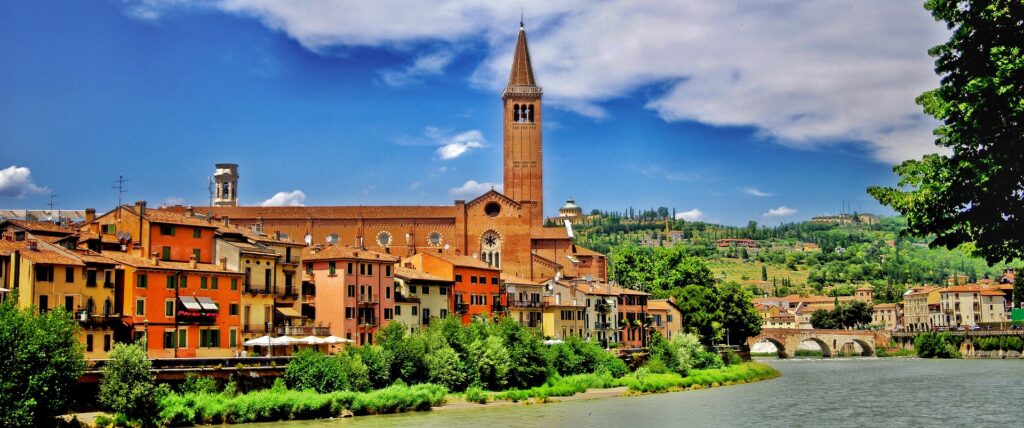
The origins of Castel San Pietro trace back to Roman times, with subsequent renovations and additions during the medieval period. The castle served strategic purposes throughout history, acting as a defensive fortress and a symbol of power. Today, it stands as a testament to Verona’s rich past and offers a serene escape from the bustling city life.
Scenic Pathways:
The ascent to Castel San Pietro involves a climb up a series of pathways and stairs. While the journey may require a bit of effort, the reward awaiting at the summit makes every step worthwhile. The pathways are surrounded by lush greenery, providing a refreshing contrast to the historical stones that lead the way.
Panoramic Views:
Upon reaching the top, visitors are greeted with panoramic views that stretch across the rooftops of Verona. The red-tiled houses, the flowing Adige River, and the iconic landmarks such as the Verona Arena create a picturesque tableau. The expansive views extend to the distant hills, inviting visitors to linger and soak in the beauty of Verona from a lofty perspective.
Best Time to Visit:
While Castel San Pietro is a captivating destination throughout the year, the late afternoon is particularly magical. As the sun begins its descent, the warm hues bathe Verona in a golden glow, casting a spell on the cityscape. Sunset from Castel San Pietro is a spectacle that transforms the landscape into a canvas of colors, making it an ideal time for photographers and romantics alike.
Photography Tip: Bring your camera or smartphone to capture the changing colors of the city as the sun sets over Verona.
5. A Culinary Exploration of Italian Delights
Verona, a city steeped in history and culture, extends its charm to the realm of cuisine. Veronese gastronomy is a delightful fusion of flavors, showcasing the region’s agricultural bounty and culinary traditions. From hearty pasta dishes to succulent meats and exquisite wines, Verona’s culinary landscape invites visitors on a gastronomic journey through Italy’s rich and diverse palate.
Must-Try Veronese Dishes:
1. Risotto al Nero di Seppia: Indulge in the flavors of the sea with this black squid ink risotto, a dish that perfectly encapsulates Verona’s connection to the nearby Adriatic Sea. The richness of the squid ink, combined with perfectly cooked Arborio rice, creates a dish that is both visually striking and incredibly delicious.
2. Pastissada de Caval: This traditional Veronese dish features slow-cooked horse meat in a robust sauce. The tender meat, infused with aromatic spices and red wine, is a testament to the region’s commitment to preserving and celebrating its culinary heritage.
3. Bigoli all’Anatra: Experience the unique texture of bigoli pasta paired with a savory duck ragù. This classic Venetian dish is a celebration of handmade pasta and the bold flavors of slow-cooked duck.
4. Amarone della Valpolicella: Raise a glass of Amarone, a renowned red wine from the Valpolicella region. The deep, complex notes of this wine make it the perfect accompaniment to Veronese cuisine, enhancing the flavors of each dish.
Famous Restaurants and Bars:
- Osteria Sottocosta:
- Location: Nestled in a charming alley in the historic center.
- Specialties: Offers a diverse menu of Veronese classics with a focus on quality and tradition. Must-try dishes include bigoli pasta and risotto.
- Atmosphere: Cozy and authentic, with rustic décor and a warm ambiance.
- Il Desco:
- Location: Situated near Piazza Bra, providing a central and accessible dining experience.
- Culinary Excellence: Known for its innovative take on traditional dishes, Il Desco has earned a reputation for culinary excellence. The menu reflects a commitment to fresh, seasonal ingredients.
- Antica Bottega del Vino:
- Wine Lover’s Haven: This historic wine bar, located near the Verona Arena, boasts an extensive selection of wines, including local Amarone. The atmosphere exudes old-world charm, making it a favorite among locals and visitors alike.
- Trattoria al Pompiere:
- Historic Charm: Established in 1620, Trattoria al Pompiere is one of Verona’s oldest restaurants. It combines historic charm with a menu featuring classic Veronese dishes.
Best Time to Explore Veronese Cuisine:
While Verona’s culinary scene is vibrant throughout the year, consider visiting during the annual Vinitaly event in April. This international wine and spirits exhibition showcases the best of Italian and international wines, providing a unique opportunity to explore Veronese wines and cuisine.



Frequently Asked Questions (FAQs):
What is the best time to visit Verona?
Verona is beautiful year-round, but the spring and fall months offer mild weather and fewer crowds, making it an ideal time to explore.
How can I purchase tickets for the Verona Arena?
Tickets for the Verona Arena can be purchased online or at the venue. It’s advisable to book in advance, especially during peak tourist seasons.
Is Juliet’s House based on a true story?
While Juliet’s House is a real historic building, the story of Romeo and Juliet is a fictional tale penned by William Shakespeare.
Are there guided tours available for exploring Verona?
Yes, several guided tours are available, providing in-depth insights into Verona’s rich history and culture. Check with local tour operators for options.
Can I climb Castel San Pietro at night?
While the climb to Castel San Pietro is not recommended at night for safety reasons, the daytime views are equally spectacular.
What makes Osteria Sottocosta a must-visit?
Osteria Sottocosta offers an authentic and cozy atmosphere, coupled with a diverse menu showcasing the best of Veronese cuisine. It’s a culinary gem tucked away from the bustling crowds.
Conclusion:
Verona invites you to embark on a journey filled with history, romance, and culinary delights. The top 5 things you can do when visiting Verona promise an enriching experience, leaving you with cherished memories of this enchanting Italian gem.
